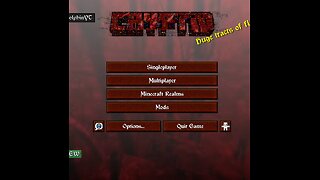Premium Only Content

5 Tips To Lose Stubborn Belly Fat Faster
Stubborn fat is tough to get rid of, but these tips will help you lose that lower belly fat and love handles that just don't seem to budge. If you are stuck and can't lose any more belly fat regardless of how much you workout and diet watch this video it will help.
🔥 FREE 6 Week Shred: https://GravityTransformation.com
📲 FREE Diet/Workout Planner Tool: http://bit.ly/2N41lTX
There are physiological differences between regular body fat and stubborn fat. Stubborn fat tends to accumulate around the belly and love handles for men, as well as the hips and thighs for women. Stubborn fatty areas around your body just don't seem to burn off or change much even as you see the pounds fall off the scale. You might see changes in your arms, your face, and other areas that are further away from your center of mass while your belly fat or love handles basically stay the same.
There are a couple reasons for this, one is that stubborn fat tends to have a higher ratio of alpha-receptors than beta receptors making the fat release at a slower rate from those last spots that just don't seem to budge.(**) These stubborn areas tend to receive less blood flow than regular subcutaneous fat as well. This means that even after you trigger fat loss with diet and exercise, and that causes your body to release the triglycerides that are found within your fat cells, Those triglycerides still have to be broken down into fatty acids and mobilized through the bloodstream to get "burnt off". So the lack of blood flow to these sites in combination with the receptors (1) makes it much more difficult to release and mobilize fat, making fat loss much slower from these stubborn areas. So how do we actually get to that fat and burn it off once and for all?
Well first I know it might already be obvious but you have to be in a calorie deficit to create the conditions to burn fat, to begin with. If you're currently not burning any fat at all, and you're not losing any weight off the scale for a few weeks or longer, that most likely means that you're currently not in a calorie deficit. This could be for a number of reasons especially if you've already been dieting for some time. For example, as you cut calories to create a calorie deficit, even if you do everything right, you'll still lose some muscle over time, slowing your metabolism. You'll also be losing fat mass over time. Fat cells require energy to maintain. So when you lose fat while dieting you also reduce the amount of energy required to maintain your body. Since your overall body weight or body mass will also go down, basic movements will require less energy further slowing your resting metabolism. So as you burn more fat and get closer to the stubborn areas, your body will require less and less energy, so you'll have to reduce your calories further. To drive this home this means that even if a macro calculator says that you have to eat 2000 calories per day to be in a calorie deficit and burn fat if you're not losing any inches or pounds and you're tracking your calories at 2000 per day, it literally means that the calculator is wrong and you're likely at maintenance, and you'll have to subtract calories further to put yourself into an actual deficit to continue burning fat, and eventually get to that stubborn fat.
And that brings me to tip number 2 before you assume that you're stuck and you start restricting calories further, make sure that you're actually tracking your calories for a full week and that you're tracking them accurately. Too many times people assume they're eating fewer calories than they actually are. This has been a consistent problem for not only average conditioned people that I've trained but also for more advanced bikini and physique competitors that I've trained. So just spend at least a few days, and track every calorie including the condiments that most people usually leave out, the oils you use, and the sugar in the creamer that you add to your coffee. After tracking if you still haven't lost weight or inches during that week, lower your calories by about another 200 to 300 calories and you'll probably notice more fat loss the following week. Keep in mind this process of dropping more calories is something that you may have to repeat a few times as your body adapts to your diet.
And that actually brings us to the third tip, which is to incorporate refeeds or calorie cycling to blunt and maybe even reverse a process known as adaptive thermogenesis. This is essentially a term used to describe your metabolism slowing down more than what can be expected just from losing fat mass and muscle mass alone. (2) This so-called "starvation response" seems to be a natural response to the decreased amount of calories or energy that you're taking in. And as you get leaner and closer to burning that stubborn fat, adaptive thermogenesis is likely to affect you more and more making it feel like you're taking one step back for every step you move forward...
-
 LIVE
LIVE
Nerdrotic
2 hours ago $1.54 earnedChris Cottrell Interpreting the Geomorphology of Carolina Bays | Forbidden Frontier #105
935 watching -
 LIVE
LIVE
MyronGainesX
15 hours ago $11.53 earnedIsrael Tries To Drag America To War, Mass Protests In US, And More!
3,687 watching -
 LIVE
LIVE
SpartakusLIVE
3 hours agoBig DADDY Spart wishes YOU a Happy Father's Day || Duos w/ @sophiesnazz
1,120 watching -
 LIVE
LIVE
EricJohnPizzaArtist
3 days agoAwesome Sauce PIZZA ART LIVE Ep. #51: Music Night featuring Sophmore John!
72 watching -
 LIVE
LIVE
sophiesnazz
3 hours ago $2.38 earnedWE VIBING! !socials
245 watching -
 23:14
23:14
DeVory Darkins
1 day agoDemocrats STUNNED by Political Attack as No Kings Portest Erupt
43.8K537 -

VapinGamers
2 hours ago $0.16 earnedFathers Day Fortnite - Gonna Go Scream at the Kids to Get Off My Lawn - !rumbot Beta Version
7.6K -
 LIVE
LIVE
NeoX5
3 hours agoTime to Take Control! | Glitchless | Summer of Games Ep 10 | Rumble Gaming
76 watching -
 20:48
20:48
Stephen Gardner
1 day ago🚨You WON'T BELIEVE what just happened to Trump & George Soros!
102K674 -
 22:06
22:06
Solar Dolphin
2 hours ago $0.23 earnedMinecraft: The scariest Horror Mod playthrough
10.4K